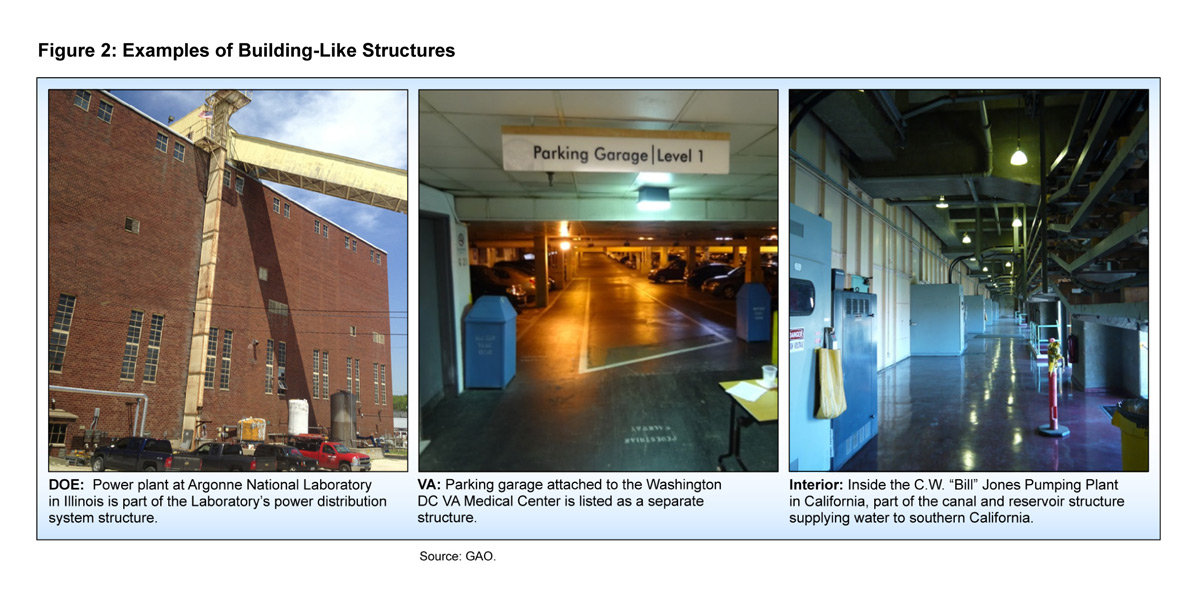Why Counting Federal Structures Isn’t as Easy as 1-2-3
 Agencies submit information about their real property to the Federal Real Property Profile database, which the Federal Real Property Council runs and the U.S. General Services Administration manages. According to the database, federal agencies operate about 480,000 structures. Non-military agencies operate 176,000 of those structures.
We found that federal agencies take different approaches to:
Agencies submit information about their real property to the Federal Real Property Profile database, which the Federal Real Property Council runs and the U.S. General Services Administration manages. According to the database, federal agencies operate about 480,000 structures. Non-military agencies operate 176,000 of those structures.
We found that federal agencies take different approaches to:
- What a structure is: For example, we found that federal agencies categorized some facilities as structures that were similar to buildings.

- How a structure is counted: For example, a radio tower at Washington’s Dulles International Airport is reported as six structures at one site, shown below. On the other hand, the Delta-Mendota Canal’s 117 miles of canal and related components like pumping stations, gates, roads and fencing are reported as a single structure.
 To interact with this graphic, check out the full report.
These different approaches, along with similar variations in how agencies assess the condition of a structure or calculate related costs, result in inconsistencies in data that could:
To interact with this graphic, check out the full report.
These different approaches, along with similar variations in how agencies assess the condition of a structure or calculate related costs, result in inconsistencies in data that could:
- make it hard to use the real property database to help agencies address the challenges of managing federal structures, and
- make it difficult for decision makers outside the agencies, like Congress, to have confidence in the number and state of federal structures.
- Questions on the content of this post? Contact David Wise at wised@gao.gov.
- Comments on the WatchBlog? Contact blog@gao.gov.

GAO's mission is to provide Congress with fact-based, nonpartisan information that can help improve federal government performance and ensure accountability for the benefit of the American people. GAO launched its WatchBlog in January, 2014, as part of its continuing effort to reach its audiences—Congress and the American people—where they are currently looking for information.
The blog format allows GAO to provide a little more context about its work than it can offer on its other social media platforms. Posts will tie GAO work to current events and the news; show how GAO’s work is affecting agencies or legislation; highlight reports, testimonies, and issue areas where GAO does work; and provide information about GAO itself, among other things.
Please send any feedback on GAO's WatchBlog to blog@gao.gov.
